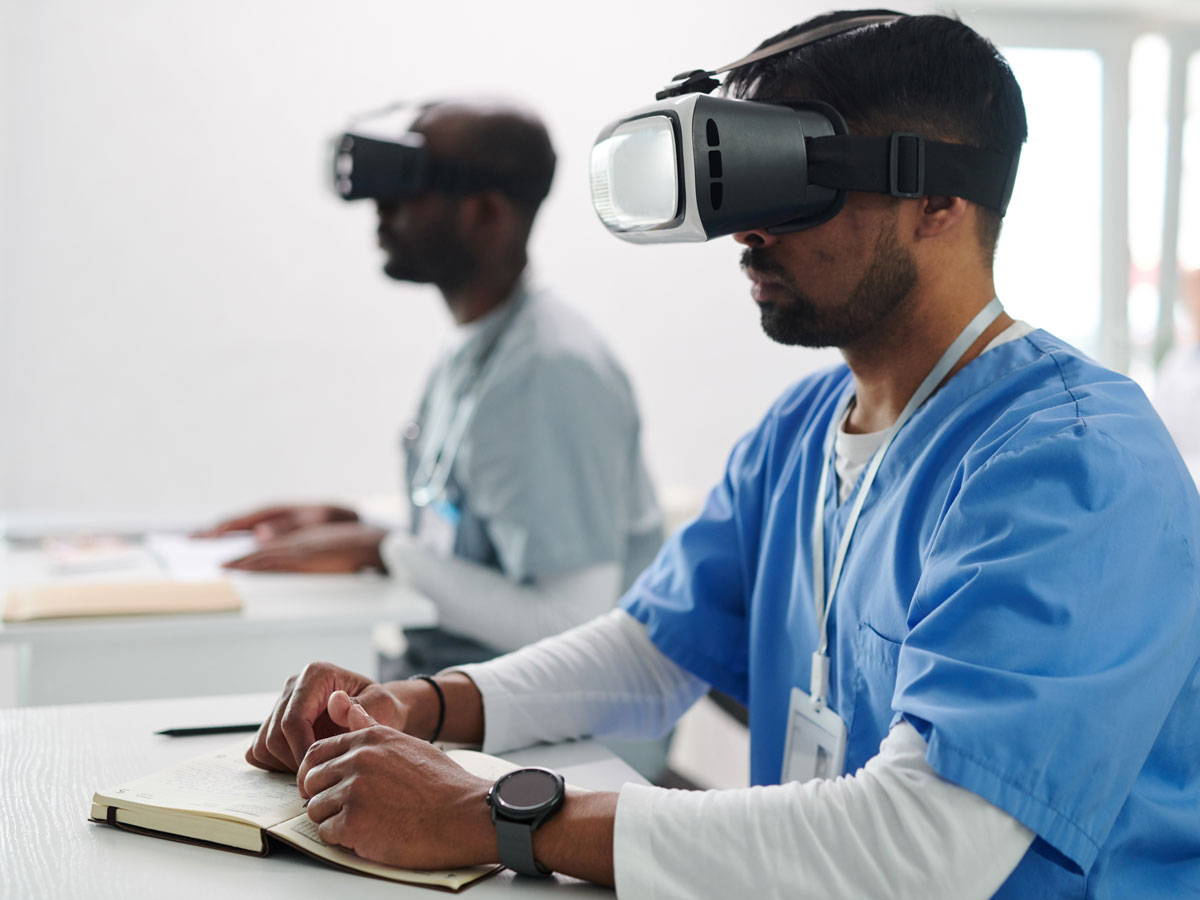How to program a better tomorrow: Harnessing disruptive technologies
Innovation Issue 38: Summer 2023
Immersive VR boosts experiential learning through a pandemic
Alumni Spotlight
Immersive VR boosts experiential learning through a pandemic

Alarms beep and monitors flash as a patient suddenly enters respiratory distress. A student nurse must take control to manage the emergency and ensure the best outcome for their patient. If they don’t, their virtual patient may die.
Research by Toronto Metropolitan University (TMU) alumna Halyna Yurkiv found that incorporating immersive virtual reality (IVR) technology into nursing training can provide students with valuable experience to increase their knowledge and confidence in managing emergency situations in clinical settings. An alumna of the Faculty of Community Service’s undergraduate and graduate nursing programs, Yurkiv set out to create a more engaging virtual training method after the COVID-19 pandemic disrupted her fourth-year clinical placement.
“Immersive virtual reality is an alternative way to foster experiential learning,” said Yurkiv. “Many nursing students report fear, lack of confidence and hesitancy around witnessing and doing something about emergency situations in hospitals. If you didn’t get exposure while you were a student, you might not know what to do once you’re a nurse.”
For her master’s research under the supervision of TMU nursing professor Cristina Catallo, Yurkiv worked in collaboration with Toronto software company Lumeto to combine three of their existing modules into a streamlined IVR experience. The resulting simulation mimics the flow of nursing procedures in a hospital. Its first lesson addresses personal protective equipment in the context of COVID-19, the second involves patient assessment and communication, and the third simulates the student nurse’s response to a patient’s respiratory distress emergency.
Using a VR headset and hand controllers, a student navigates around their patient’s hospital room. The room is stocked with monitors showing the patient’s vital signs, an adjustable bed, IV medications and a table with tools like a stethoscope, an Ambu bag and intubation equipment. The student must decide how to proceed and what tools are appropriate for the situation and their scope of practice as nurses.
“You walk in and hear all these alarms beeping. That’s part of the disorientation that evokes a fight or flight response,” said Yurkiv.
In a pilot with 30 third-year and fourth-year nursing students, Yurkiv tested the students’ knowledge scores before and after the simulation and documented their perceived learning and confidence after the simulation. She also tested the usability of the IVR technology. She found a statistically significant difference between pre-simulation and post-simulation tests regarding students’ knowledge of respiratory distress management. She also found high mean scores in students’ perceived learning and confidence in managing respiratory distress. The students also reported good usability of the IVR technology.
Yurkiv conducted the IVR pilot project for her master’s thesis and presented her findings in webinars for the Registered Nurses’ Association of Ontario (RNAO) and Healthy Simulation. As part of her doctoral research, Yurkiv plans to explore incorporating artificial intelligence into IVR simulations to facilitate interactive communication and train students’ communication skills.
Student view of an immersive VR simulation where nursing students practice assessing and treating virtual patients. Courtesy of Lumeto.
Immersive virtual reality is an alternative way to foster experiential learning. Many nursing students report fear, lack of confidence and hesitancy around witnessing and doing something about emergency situations in hospitals.

Watch the RNAO webinar (external link, opens in new window) on Experiential Learning of Respiratory Distress Management in an Immersive Virtual Reality Simulation.